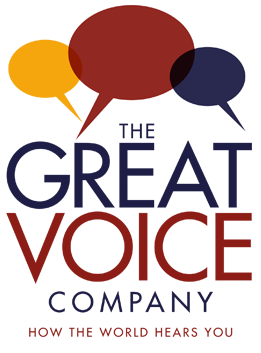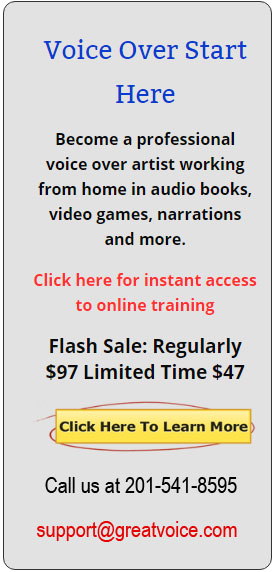Do your eyes get ahead of your mouth? Good voice-over looks deceptively simple to people on the outside. After all, it’s just talking into a microphone, right? But those of us on the inside know it takes much more than that. There are several core competencies the professional voice artist must master and being an efficient, fluid reader is one of them.
After all, your job as a voice actor is to not only interpret the writer’s words, but also to make sure that all those words are spoken correctly.
Everyone makes mistakes but if you break down a lot, it can start to annoy the recording engineer who has to edit your mistakes (unless he or she is getting paid by the hour ;-)) and the client who has to pay for the studio time.
If you’re recording and editing your work at home, the problem is less of an issue since the client will only hear the good takes, but it can still be troublesome. When it takes a lot of time to get the job done, you eat into your profit margin and the work becomes frustrating and more drudgery than fun.
If this problem has been bugging you, take heart. It’s relatively easy to solve if you follow my plan.
Visual Acuity
The first step toward improvement is to make sure your eyes are ok. You might not be seeing the script as well as you should. I have always been a very fluid reader but I hate to admit that as I have had to start wearing reading glasses, I break down more than I used to. I always make sure I clean my glasses before a session since even slight smudge can be distracting. A well lit script that is comfortably placed at eye level is also helpful.
Relaxation
If you record when you’re stressed and your mind is wandering, you will tend to make more mistakes. Take a few yoga classes and develop a calming ritual so you can start your sessions nice and relaxed and stay focused. Deep breathing helps blow off tension, as does stretching and vocal warm ups. Cut back on caffeine, get rid of as many outside distractions as you can and keep your concentration in the here and now.
Eye-to-Mouth Coordination
While all of us can read, not everyone is fluid reading aloud. I find that many people take this skill for granted. But it’s a largely physical skill, with a psychological component. Just as some people are natural-born athletes, others are naturally fluid readers. By now, you know which group you’re in. If you are not naturally fluid, it’s nothing to be ashamed of. It’s just the way you’re wired. The good news is with practice you can improve your eye-mouth coordination and strengthen certain neural pathways just as you can improve your eye-hand coordination and play better tennis or golf.
Perfect Practice
The key to effective voice over practice is to be consistent and to measure your progress. Most people think it’s enough to read some articles out loud every day trying to keep their eyes and mouth in synch, but practice is meaningless without measurement and goals. Here’s how to do it. Block out about 20 minutes of uninterrupted time. Choose an article or script with about 300-500 words. Record yourself reading and count the number of breakdowns. Repeat until your practice session ends and note how many mistakes you make in each run through. Log your results. Wait a day (or several hours) and try it again until you are able to read the text with fewer breakdowns. Once you master a text and get your breakdowns to an acceptable level, switch to a different script, gradually increasing the level of complexity
If you commit to practicing fluid reading every day, even for 10 minutes at a time, I bet you will see results in as little as 21 days, maybe sooner if you practice mindfully and consistently.

